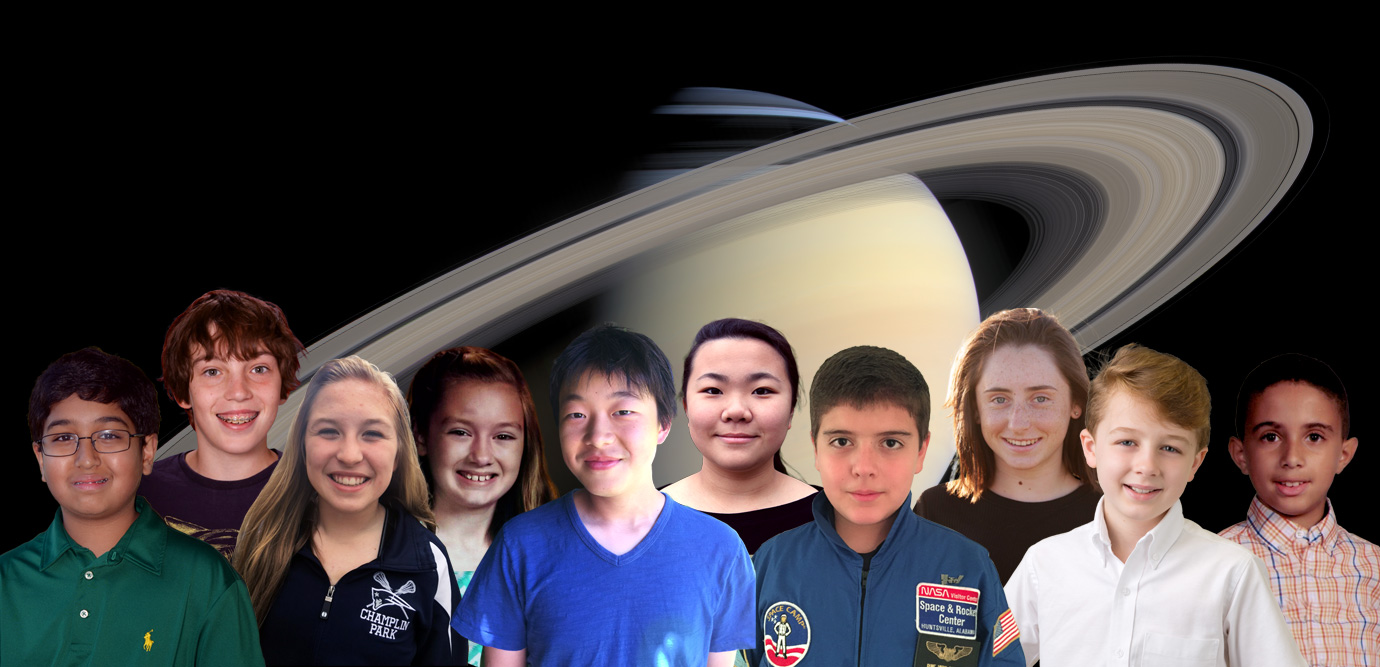Resources
Scientist for a Day 2015-2016

This contest is now closed. The Cassini Scientist for a Day contest challenges students to become NASA scientists studying Saturn. Participants examine three possible observations taken by Cassini and are tasked to choose the one they think will yield the best scientific results. This choice must then be supported in essay. The contest meets U.S. National English and Science Education Standards.
Which to choose
Topic 1: Rings and Moons
Sonia Hernandez, Cassini Navigator
Hi everyone! My name is Sonia, and I am a Navigator for the Cassini spacecraft.
My job is to steer Cassini in the right direction as it orbits around Saturn and its moons.
I think we should point Cassini's camera to target number one. On December third, Cassini will be in a perfect position to take an image of Saturn's rings and three of Saturn's sixty-two moons: Tethys, Enceladus and Mimas.
I like target one because it includes a picture of Saturn's rings. We know that Saturn's rings are made of ice, rock, and dust, but we still don't know how old the rings really are.
Another reason why I like target number one is that we get to see Enceladus.
That is my favorite moon in the Saturn system.
Enceladus is a really mysterious body, covered by a thick layer of ice, with a salty liquid water ocean underneath the surface.
Can you imagine being able to ice skate on this moon?
Enceladus also shoots out water from under the surface, similarly to the geysers in Yellowstone National Park.
The ice particles that come from these geysers are actually creating a ring around Saturn, called the E ring.
By taking this picture we'll get a feel of just how complex and beautiful the Saturnian system really is.
I hope you like target number one, just as much as I do.
Good luck with your essay!
Topic 2: Jupiter
Estelle Deau, Cassini scientist
Hi, my name is Estelle, and I am a Cassini scientist studying Saturn's rings.
Even though images of Saturn and its beautiful rings are always my favorite, this time I think we should point Cassini's cameras at Jupiter.
This is a great opportunity for scientists who study planets in other solar systems, called "exoplanets."
This observation will allow scientists to study Jupiter as if it was an exoplanet, to see how exoplanets with an atmosphere appear from a billion miles away.
Observing Jupiter from far away has already been done in the past by Voyager 1 more than 25 years ago.
Cassini has more recent and much better instruments on board, so it will provide more accurate information.
Cassini has already observed many objects in our Solar System:
Earth, our Moon, Uranus, and even Pluto!
It's time to take an image of Jupiter!
I think target number 2 is the best choice!
Good luck!
Topic 3: Rhea and Tethys
Morgan Cable, Cassini Research Scientist
Hi everyone. My name is Morgan.
I'm a research scientist for the Cassini mission.
My job is to help Cassini scientists and engineers work together to achieve amazing discoveries.
My favorite target is Target 3, because this set of images will show something very special called an 'occultation.'
Occultations happen when one object, like a planet or a moon, passes in front of another, hiding it from view.
In this case, Rhea will pass in front of Tethys.
Occultations like this give us a very accurate way to assess the orbits of these moons, which change slowly over time.
I like Rhea and Tethys because they are still mysteries to us in some ways.
We aren't sure what the interior of Rhea looks like.
Some of our measurements suggest it has a rocky core, but other data indicates it is the same throughout.
Tethys is also intriguing.
It's composed almost entirely of water-ice, which makes it one of the whitest and brightest objects in the solar system.
Recently some reddish streaks, termed "tiger scratches" have been seen that don't match with any surface features.
Their origin is currently a mystery, which is why I hope you select Target 3.
Good luck with your decision, and have fun!
Credit
NASA/JPL


